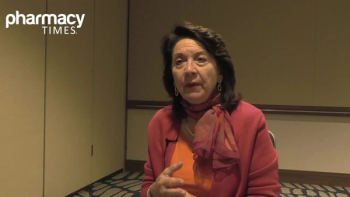
Severe Asthma: Clinical Conundrum
A comprehensive new review explores approaches to classifying and treating severe asthma, which affects 5% to 10% of asthma patients.
A comprehensive new review explores approaches to classifying and treating severe asthma, which affects 5% to 10% of asthma patients.
Severe asthma—a heterogeneous disease that requires treatment with high-dose inhaled corticosteroids—affects 5% to 10% of asthma patients. The condition is costly to treat, consuming more than its share of health care resources. A comprehensive review of a condition’s pathology and current and investigational treatments can frequently help pharmacists deal with difficult cases, and just such a
Severe asthma presents in different, difficult-to-characterize clinical and pathophysiological phenotypes. Currently, asthma specialists rely on 2 phenotypes:
- the clinical phenotype: asthma with frequent severe exacerbations, asthma with fixed airflow obstruction, and corticosteroid-dependent asthma
- the inflammatory phenotype: persistent severe eosinophilic asthma, non-eosinophilic severe asthma with increased neutrophils, and severe paucigranulocytic asthma.
Improved characterization that links genotypes to phenotypic manifestations could help clinicians identify appropriate treatments earlier.
Recently, researchers have also explored the concept of the endotype, which the review describes as “a subtype of a disease defined by a unique or distinctive functional or pathophysiological mechanism.” This concept has evolved from a debate over whether asthma is a single disease with a variable clinical presentation or a number of different diseases whose common link is the presence of variable airflow obstruction. The endotype hypothesis divides asthma into different entities, each of which has a specific biological causal mechanism.
The American Academy of Allergy, Asthma, and Immunology and the European Academy of Allergy and Clinical Immunology have proposed 6 endotypes that meet at least 5 of 7 suggested parameters: clinical characteristics, biomarkers, lung functionalism, genetics, histopathology, epidemiology, and treatment response. The proposed endotypes are as follows:
- aspirin-sensitive asthma
- allergic bronchopulmonary mycosis
- allergic asthma (in adults)
- preschoolers with wheezing and positive asthma predictive indices
- severe late-onset hypereosinophilic asthma, and
- asthma in cross-country skiers.
Regardless of whether a phenotypic or endotypic classification is used, patients with severe asthma need tailored, on-demand therapy.
Patients with severe asthma may benefit from immunomodulators (methotrexate, ciclosporin, a macrolide antibiotic for its anti-inflammatory effect, and perhaps soon, a new agent in the dissociated corticosteroid class) so they can reduce their corticosteroid doses and decrease the likelihood of steroid side effects. (However, ciclosporin and macrolide antibiotics should not be combined as they can interact to produce serious harmful effects.)
Long-acting bronchodilators (long-acting beta2-adrenergics, tiotropium bromide, phosphodiesterase-4 inhibitors) remain the cornerstone of treatment. In addition, biologics including omalizumab and the investigational agents mepolizumab, altrakincept, and pitrakinra may help patients who have specific types of asthma. In the future, we may also see chemokine inhibitors and bronchial thermoplasty used to control asthma. The latter delivers thermal energy to the large airways during bronchoscopy to decrease the amount of bronchial smooth muscle and is FDA-approved.
Ms. Wick is a visiting professor at the University of Connecticut School of Pharmacy and a freelance writer from Virginia.
Newsletter
Stay informed on drug updates, treatment guidelines, and pharmacy practice trends—subscribe to Pharmacy Times for weekly clinical insights.




















































































































































































































